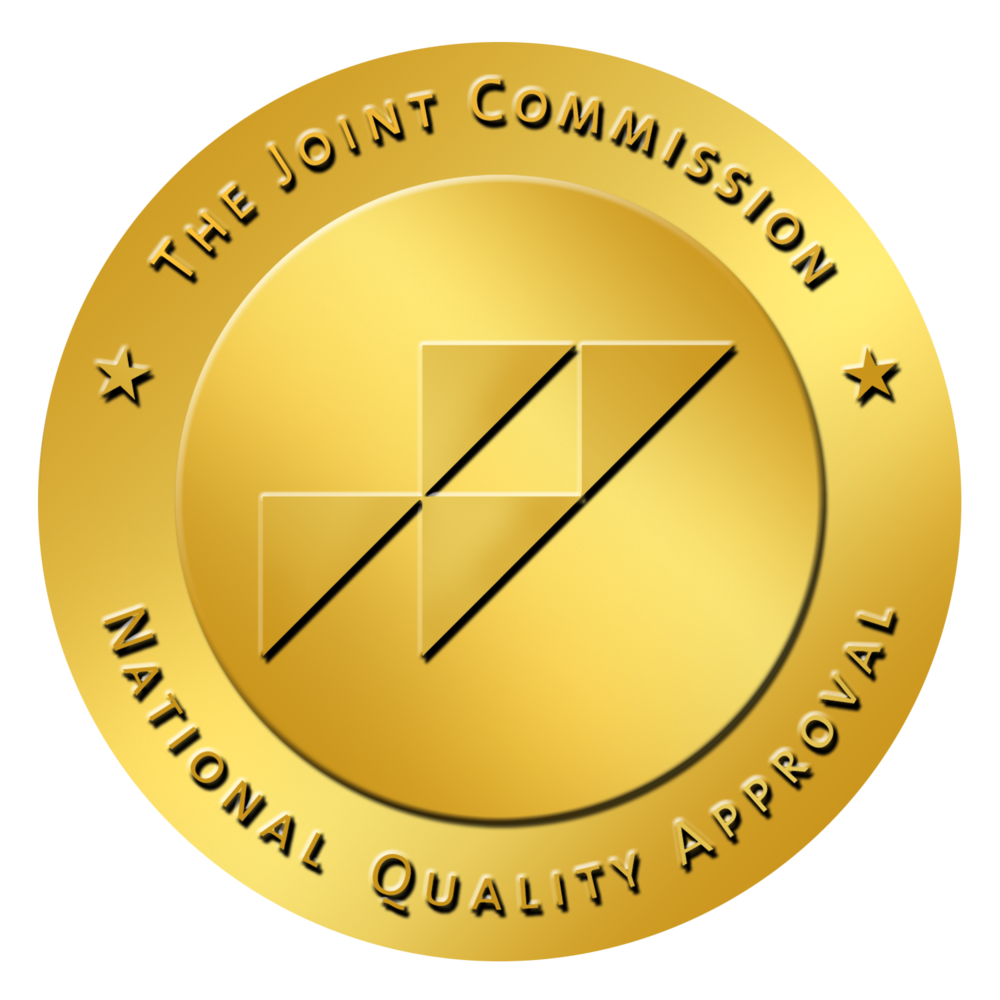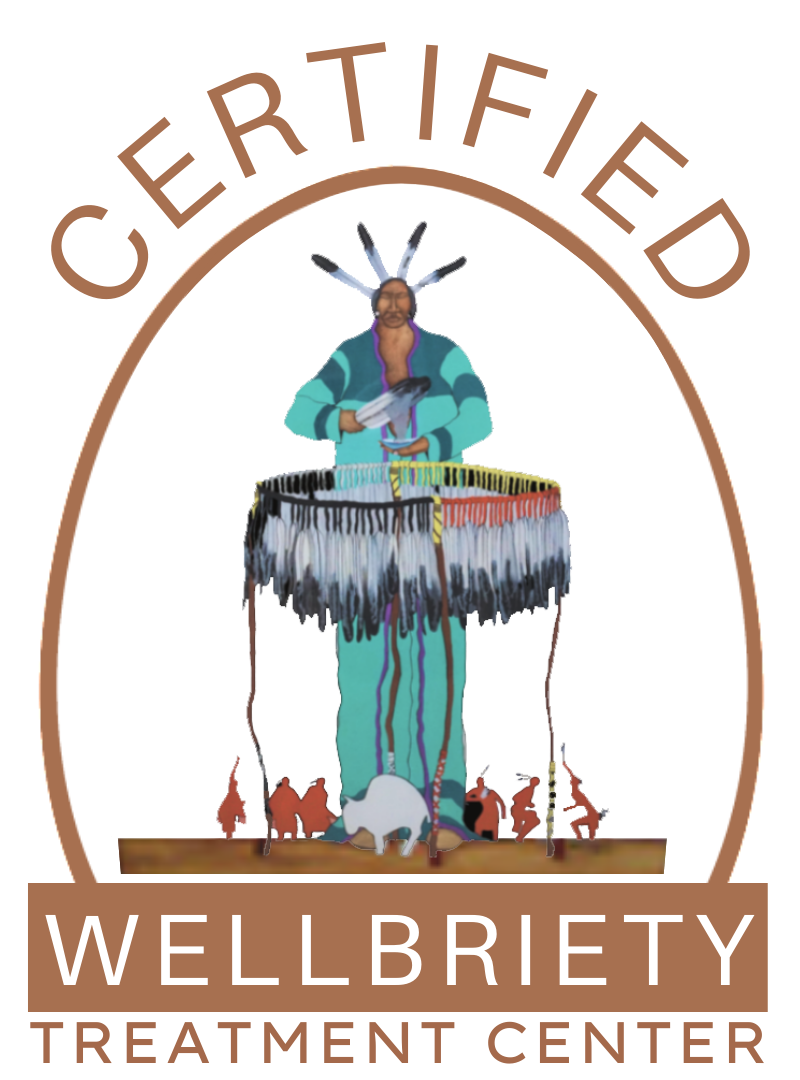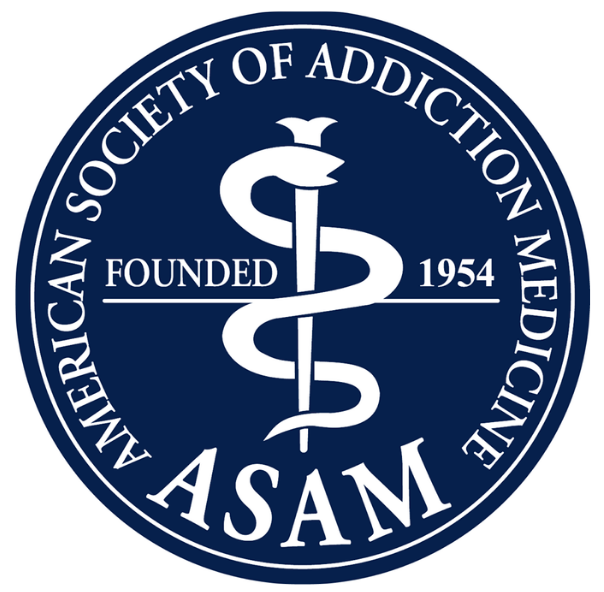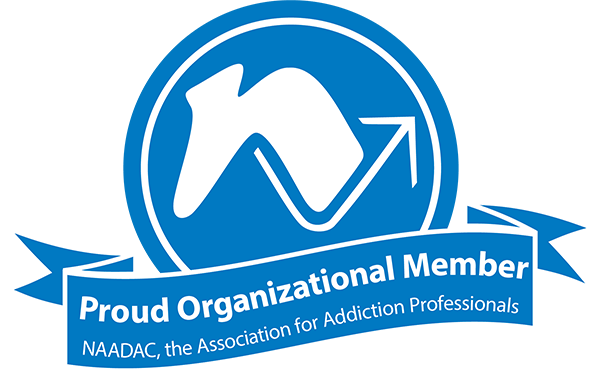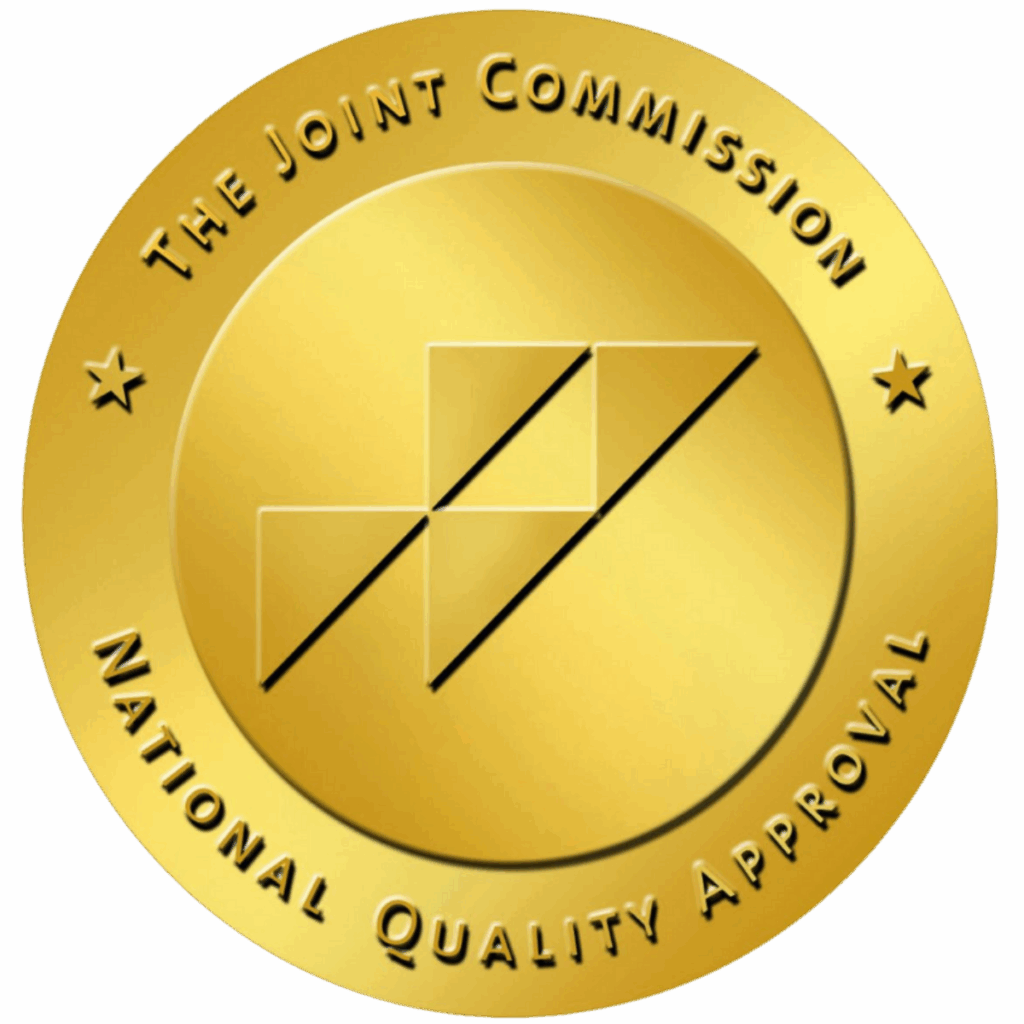Many of us will encounter some kind of traumatic experience in our lives. Studies show that in the U.S., 67% of people have experienced at least one traumatic experience, and 17% four experiences or more. Surviving a car accident or natural disaster, losing a loved one, being the victim of abuse or witnessing a horrific, harmful event can lead to psychological trauma — the distress a person may feel when they experience an event too overwhelming for them to emotionally process.
However, the historical losses that Native Americans and American Indians have experienced for centuries have led to persistent intergenerational traumatic wounds.
“Our country’s growth was at the expense of the continent’s indigenous peoples who suffered genocide, dislocation and other unspeakable patterns of violence on physical, mental, emotional and spiritual levels,” notes Wisdom of the Elders, an advocacy group for Native Americans and indigenous people.
The website, citing Maria Yellow Horse Brave Heart, calls this historical trauma “the cumulative emotional and psychological wounding over one’s lifetime and from generation to generation following loss of lives, land and vital aspects of culture.”
A Psychiatry.org report illustrates that even today, Native Americans are still the focus of discrimination and harassment in tandem with unfair treatment by public institutions compared to white people. This collective, historical trauma, then and now, has meant that Native American communities across the country are more vulnerable to:
- Suicide and suicidal thoughts
- Alcoholism
- Drug and substance abuse
- Poverty
- Homelessness
- Trauma disorders, including PTSD
- Other mental health issues
When one or more of these issues has been part of your life, family or tribe for years, they can trigger the body’s stress responses and leave sufferers feeling intensely frightened, unsafe or completely powerless, as if being trapped or under constant threat — even when there is none. They may be accompanied by deep feelings of anxiety, shame, humiliation, abandonment, anger, aggressiveness, rejection and feeling unsupported.
If you identify as an American Indian or Alaska Native, you might be wondering if therapy for trauma can really work for you and what the process actually involves. Keep reading to learn all the different ways it can together help heal and honor your experiences.
Therapy for Trauma
Trauma therapy is a form of talk therapy that can help you begin healing from the emotional and psychological pain caused by traumatic moments, from singular to lifelong experiences.
When you go through a difficult, hurtful experience or time in your life, like abuse or another form of trauma, those memories and feelings can get stuck or buried — a protective defense mechanism — but can still emerge in the present day, disrupting your mindset, your mood, your functioning or your ability to interact and engage with others.
“When you experience something really traumatic your body suspends ‘normal operations’ and temporarily shuts down some bodily functions such as memory processing,” notes website PTSD UK.
Sometimes, people suffering from an anxiety disorder may become triggered for reasons they may be unaware of. Flashbacks or nightmares of a traumatic event or avoidance of certain people, places or feelings, even when unrelated to the original trauma, are common.
Therapy for trauma with a compassionate therapist is a place to start safely exploring and unpacking those memories and to begin understanding the root of your traumatic experiences. Some benefits of trauma therapy include:
- Slowly lessening the impact those traumatic memories have on you
- Overcoming fears attached to traumatic reminders you might be avoiding
- Learning to cope with and manage triggers if they arise
- Confronting false beliefs you may have about the trauma, yourself and others
- Renewing your trust in other people that trauma may have led you to distrust and doubt
Trauma Therapy for Native Americans
It can be painful to relate to the generational grief that so many Native people carry.
Trauma therapy tailored for them is meant to honor that deeper context. Starting a treatment program means that your case manager, therapist, support staff and other peers you may meet in group therapy, understand that Native American trauma has specific origins rooted in survival, where struggles with addiction, Post-Traumatic Stress Disorder (PTSD) or Complex Post-Traumatic Stress Disorder (C-PTSD) are often hard-fought ways of simply trying to cope with pain.
In trauma-focused care, you’ll find a common thread of trust throughout, from the start of treatment to the end. It allows you to tell your story and gently revisit and speak about traumatic experiences and memories when there’s been no opportunity to do so before now. Therapy is an outlet to be heard and honored, to start the healing you deserve. And it’s a chance to make a difference — to put an end to your own struggles with trauma and advocate for the end of generational trauma stemming from historical losses.
Types of Trauma Therapy
What makes trauma therapy so effective is the variety of different methods you might see during treatment. Each one is geared toward addressing trauma, but all of them are uniquely different in how they approach symptoms and let you process your experiences and memories:
Cognitive Processing Therapy
Part of struggling with trauma is how someone mentally and emotionally processes a past traumatic event. After a trauma, it’s easy to become stuck on negative thoughts — “I should have done something differently” is common to survivor’s guilt, or “The world is a completely dangerous place. Nobody can be trusted,” might ring true for Native Americans witness to generations of tribal discrimination. These cognitive stuck points become symptomatic of the cyclical mindset of a trauma disorder.
Like its name suggests, Cognitive Processing Therapy (CPT) is a present-centered treatment to help you reprocess those thoughts, where you’ll learn to confront and change them into more helpful, positive beliefs attached to the trauma. If this sounds similar to CBT, or Cognitive Behavioral Therapy, that’s because CPT is closely related to CBT, a therapy designed to reconcile negative thoughts, feelings and actions.
Writing about your traumatic experience is a large component of CPT. Your therapist may ask you to write an impact statement at the outset, detailing how past traumatic events have affected you. You might also write a more detailed account of the experience, which you’ll read back in subsequent sessions, examine those beliefs and work to “unstick” thoughts over the trauma you may be consciously avoiding. In turn, you’ll develop new ways of thinking that enable you to move forward.
EMDR
Eye Movement Desensitization and Reprocessing (EMDR) is a type of mental health and trauma therapy that operates on the notion that when a traumatic experience is too intense or scary, the brain can effectively block and store it away, along with all the original sights, sounds, thoughts and feelings accompanying it.
“EMDR therapy shows that the mind can, in fact, heal from psychological trauma much as the body recovers from physical trauma,” notes the EMDR Institute.
Unlike other types of talk therapy, EMDR therapy doesn’t necessarily involve conversing in detail about past trauma. Here, your therapist will use what’s called bilateral stimulation — a series of repetitive, guided eye movements, sounds or taps while you hold the traumatic memory in mind, in the moment. It’s a proven therapy to help your brain reprocess the memory and reduce its emotional intensity.
Trauma-focused CBT
Abbreviated as TF-CBT, trauma-focused CBT is a type of Cognitive Behavioral Therapy. Just as CBT works to change negative into positive thinking, emotions and behaviors, TF-CBT centers on reframing a mindset beset by traumatic memories that can affect how you feel and act.
TF-CBT was originally geared clinically toward children victims of sexual abuse, but today, it’s geared for anyone of any age. “Cognitive behavioral techniques are used to help modify distorted or unhelpful thinking and negative reactions and behaviors,” notes publication Psychology Today. “Learning to challenge invasive thoughts of guilt and fear can help … to reorganize (one’s) thinking in a healthier and happier way.”
Exposure Therapy
When something reminds us of a traumatic experience, our natural, instinctive tendency may be to avoid it and the pain that accompanies it. But over time, if complex trauma isn’t addressed or resolved properly, the fear you hold won’t go away on its own and can even become amplified.
Exposure therapy, like the other therapies we’ve talked about on this page, works to reduce the mental and emotional intensity of trauma by gradually exposing you to the situations, places or objects that may remind you of or trigger a traumatic memory.
What’s helpful about exposure therapy is the distinction it makes. Rather than working to erase the memories, it can help you accept the traumatic experiences as they happened — even respecting them for what they represent — but making peace with the trauma and yourself, without reservation or judgment.
This might happen through imaginal exposure, where you might vividly imagine or describe the trauma, or in vivo exposure, which might see you confront real-life situations you may be avoiding. One version of this is called prolonged exposure, a gradual approaching of memories, feelings or situations related to trauma until you can begin handling and managing the feelings until the fear no longer has any control.
What To Expect in Trauma Therapy?
In the last section, we talked about gradual exposure to trauma, and that’s what you can expect when walking into trauma therapy treatment. It’s easy to think that you’ll just dive in and be confronted with emotions and memories you aren’t ready for — and that’s contrary to the truth. Therapy for trauma means moving at your own pace, your own comfort level.
Your therapist’s initial role is to build trust in the safe, secure confines of an office or treatment facility, where you’ll begin slowly working to process past trauma and learning simple, practical, pragmatic ways to cope with big feelings when they arise that you can apply in the day-to-day. Only when you feel ready, you’ll begin to work through more difficult memories and begin to reframe the way you’ve thought, felt and acted toward your trauma in a more positive direction.
The good news is that this can happen in a variety of ways. When you, your case manager and therapist begin developing your individualized treatment plan, you may agree that one-on-one therapy is best for you. For others, a group setting serves them better. You might also engage in a blend of therapies, like CPT, EMDR and exposure therapy or another mix, depending on the nature of the trauma disorder and severity of your symptoms. Likewise, your plan will determine if a residential, inpatient setting or an outpatient arrangement works best for you.
Therapeutic Services for Trauma
Trauma therapy follows what’s called a continuum of care — a sort of treatment trajectory that includes a number of different services and therapies. Think of it like a therapeutic toolkit to get the most out of your treatment. Here’s what we offer at Aliya Health:
Behavioral Therapies
EMDR, trauma-focused CBT, exposure therapy and others are forms of behavioral therapy, an umbrella term for different types of talk therapies that can help you with distress tolerance as well as spot and change unhealthy thoughts, emotions and habits.
Behavioral therapy is the number one component of trauma treatment and, at its heart, operates on the belief that because our behaviors — both good and bad — are effectively learned, we inhabit the power and ability to unlearn them and relearn new, healthier and productive ones in their place.
Expressive Therapies
The simple act of talk therapy discourse can help unpack, sort out, make sense of, resolve and take control of trauma’s effect on you. But when words cannot convey the depth of trauma, one alternative is expressive therapy. Painting on a canvas, writing poetry or improvising music or dance are just a few examples of how art, music and movement therapy become alternative outlets for expressing trauma. You don’t need to be an artist or a musician. Expressive arts therapy doesn’t call for expertise or skill in the medium — just a willingness to participate.
The act of simply creating something abstract yet concrete can help you access and release feelings stored non-verbally, bypassing the part of the brain that might shut down when trying to talk about the experience directly.
Experiential Groups
Most talk therapy happens inside a therapist’s office or a rehab facility, but what about taking treatment outdoors? Trauma can often go hand-in-hand with conditions like depression, which can rob you of the ability to enjoy activities you once loved.
Experiential therapy gets you reacquainted and reconnected with being active. Hands-on activities like caring and bonding with equine therapy horses, adventure-based challenges, ropes courses or problem-solving challenges with your peers in recovery do everything from emotional regulation, rebuilding self-esteem and trust, improving communication and, most importantly, teaching you that you’re a person-centered individual capable of positive experiences and connections not defined by past trauma.
Processing Groups
Group therapy imparts multiple benefits. You can share your experiences in front of others in recovery (in a non-judgmental space), gain perspective from their stories and work together to process your individual and collective trauma — so integral and imperative when multiple people or Native American heritage are present in a session and can relate to past traumatic experiences.
In this type of processing group, the simple act of hearing someone else voice a feeling or notion you thought you were alone in can prove otherwise, validating your experiences and illustrating that your personal history is valid, it’s important and that you’re worthy of healing.
Mental Health Education
Part of getting treatment for trauma, addiction or co-occurring disorders (the existence of a mental illness and substance use disorder at the same time) is knowing and understanding the why behind a condition. Why does trauma happen? What tangible changes does it make to the brain? Where do flashbacks originate and why do they happen? How does trauma contribute to other symptoms, like feeling easily startled or constantly on edge?
Mental health education sessions teach you about these neurobiological factors. A companion to talk therapy, you can enter your behavioral health sessions armed with more insights about PTSD and complex PTSD, where knowledge is power in your trauma recovery.
Holistic Therapies
Firstly, what does “holistic” mean? Holistic means “whole,” and holistic therapy embodies the principle that there’s a mind-body-spirit connectivity to your complete, whole self. Different holistic therapies are meant to address each of these aspects as a complement to your talk therapy.
For instance, activities like yoga, meditation or acupuncture are each rooted in mindfulness, the practice of becoming aware of your breath, your mind, your sensations and your body in each present-centered moment. Put into regular practice, holistic therapy works to release physical tension and quiet a racing mind, encouraging renewed safety and comfort in your body and mind again.
Medication Management
Some instances might call for being prescribed medicine to help with symptoms, manage substance withdrawal or just to facilitate therapy and make it easier to focus and engage. The formal name is medication management, with your medical providers mapping out the types of drugs, dosages and timeframe as it fits within your treatment plan.
For instance, many people suffering from depression are served well on a monitored SSRI (Selective Serotonin Reuptake Inhibitor) or SNRI (Serotonin-Norepinephrine Reuptake Inhibitor) regimen. According to the U.S. Department of Veterans Affairs, three different types of SSRIs and SNRIs — sertraline, paroxetine and venlafaxine — are often prescribed to treat trauma and PTSD.
Trauma Therapy Techniques
What are some of the methods your therapist might utilize in a given session? They may draw from a variety of clinical, trauma-focused techniques:
Cognitive Restructuring
Negative thinking can adversely influence how you feel and act, and that’s true for any disorder, from trauma to depression, anxiety to drug addiction. Behavioral therapy’s role is enabling you to reframe and restructure these cognitive distortions, to change how you think. Your therapist, taking an objective stance, may help you question which thoughts negatively affect you. How does a thought like “I’m worthless and nobody will ever love me” serve you well? They’ll help you examine the evidence against that belief and consciously help you craft a more balanced and realistic one, like “I’m worthy of giving and receiving love.”
Somatic Experiencing
Because trauma can be held and stored physically, somatic — meaning “of the body” — therapy centers on how emotions can appear debilitatingly in the body. “In somatic therapy,” notes Harvard Health, “the body is the starting point to achieve healing. This form of therapy cultivates an awareness of bodily sensations and teaches people to feel safe in their bodies while exploring thoughts, emotions and memories.”
In a session, your therapist helps you gently notice the physical sensations in your body associated with trauma, like a tight chest or shoulders. The goal is to allow your body (just like your mind in talk therapy) to process and release energy in gradual stages.
Stress Management Skills
Part of what can make a trauma disorder challenging to bear with is how untimely and unpredictable it can manifest, affecting how you feel and function and, ultimately, create stress. Trauma therapy imparts several actionable distress tolerance techniques you can apply in your daily life:
Relaxation Techniques
A racing mind, being easily startled, on constant high alert and on guard are common trauma disorder stress responses. The body cannot relax when the nervous system and the amygdala — the part of the brain responsible for emotional regulation — are overstimulated. Part of trauma therapy is learning various techniques to help you stop and find some calm during moments when a flashback or triggering reminder may come without warning. In talk therapy or in a holistic session (like meditation), your therapist might guide you through deep breathing exercises, inhaling for four counts and exhaling slowly for six to eight, activating the body’s natural calming response.
Then there are techniques like 5-4-3-2-1 method, where you concentrate on each of your five senses, one at a time, naming five you can see, four you can feel, three you can hear, two you can smell and one you can taste. Guided imagery or finding your window of tolerance, an inner space to talk clearly and calmly about your challenges, are other trusted techniques.
Creative Self-Expression
The act of creating something — whether it’s journaling, writing poetry, painting, sculpting, etc. — is akin to a direct line of communication to your emotions. In creative arts therapy, it’s ideal when traumatic moments just can’t be articulated, giving voice to part of yourself that may not have words in the moment.
But they’re also incredibly effective calming activities. To be in the moment, brush in hand, canvas in front of you, can help ground you, bringing you back to center. It’s another stress management tool to waken creative expression and quiet the inner noise of trauma-based stress.
Body Scanning
Stress from trauma or any other reason can take you away from yourself. We all have moments when we’re operating on autopilot, our minds and movements automatically going through the motions almost mindlessly. Body scanning is a therapeutic technique you might find in treatment that works to make you more mindful of yourself. It’s a type of meditation where, like its name suggests, you’ll bring attention to each part of your body, from your toes to your head, noticing whatever sensations are present.
“Think of a body scan meditation as an inventory of your mind and body,” notes the Cleveland Clinic. Although uncomfortable traumatic experiences and memories may come to the forefront, just notice them without judgment. Trust yourself during a body scan and know that it’s a safe way to redirect your energies and strengthen the mind-body connection that’s so integral to your well-being.
What Are the Benefits of Trauma Therapy?
Suffering from trauma, the mind and body enter a self-protective mode that can make healing from past traumatic experiences difficult. Therapy opens a door to healing in several ways:
- Through therapy for trauma, you can start seeing a significant reduction in PTSD symptoms.
- You’ll learn valuable coping skills for emotional self-regulation and managing stress and triggers.
- Trauma can bring about feelings of undeserved shame. Trauma therapy imparts a greater sense of self-worth and empowerment.
- Self-medication is a common trauma coping mechanism. You’ll find a diminished desire to use substances and instead find true answers through treatment.
- Making peace with past trauma through therapy allows you to build better relationships and live a more present and fulfilling life.
How Effective is Trauma Therapy?
“Trauma-informed therapy addresses the aftermath of trauma by prioritizing an understanding of the root causes of distress and creating a safe, supportive environment that fosters healing and resilience,” notes a 2024 study. In addition to those reasons, trauma therapy has proven effective to help people reclaim their lives and well-being when symptoms of trauma have been an unhealthy focal point, sometimes for a lifetime.
In fact, statistics from another study reveal that after completing therapy, nearly 45% of people showed a marked, tangible reduction in PTSD symptoms. This means that the effects of trauma you may feel, no matter how unique, are evidence-proven treatable, time and again.
Can Trauma Therapy Help Me?
If you’ve been struggling with the hallmark signs of a trauma disorder, from flashbacks to nightmares, anxiety to fear, shame, guilt, a preoccupation with past trauma beyond your control, or if you’re using substances to cope, then yes — trauma therapy can help. All it takes is your commitment and motivation to stay the course with therapy. We promise that it can help you in your recovery.
Is Trauma Therapy Covered by Insurance?
Yes, trauma therapy is covered by most insurance plans. We work with both Shasta Insurance and the Healthcare Management Administration (HMA) as well as the federally sponsored Indian Health Service (IHS) to ensure maximized insurance coverage for rehab. By contacting us today, our admissions team can work to immediately verify your current insurance coverage. Likewise, we can work with you on payment plans for any out-of-pocket expenses.
Trauma-Informed Care at Aliya Native American Program
Describe our trauma-informed approach to addiction treatment. Include keywords related to safety, non-judgmental, compassionate, empathetic, regain control, symptom management, etc.
Our trauma-informed approach to care connects closely with the principles of our clinical philosophy: to heal, to teach, to empower, to amaze. We meet everyone who comes through our doors where they are and we’re here to meet your needs.
When you’ve struggled with trauma, our goal is to explore those experiences with you, find the root causes of your condition and develop real-world solutions you can set into motion for the rest of your life. Trauma therapy is designed to empower you in a safe, non-judgmental, compassionate and empathetic space — from managing your symptoms to regaining control of your life.
Our Native American program was started to honor tradition and empower recovery — your recovery. We’re dedicated to helping you reestablish your connection to yourself, your community and your culture. By contacting our team today, get answers to your questions about treatment, insurance and more, and make trauma recovery a reality.
How Common is PTSD in Adults? – PTSD: National Center for PTSD
Understanding PTSD Flashbacks and Triggers
Just the Facts – PTSD – Trauma Triggers and Memories – Overview).
Trauma Therapy: Definition, Types, Techniques, and Efficacy
Transcending Historical Trauma – Wisdom of the Elders, Inc.
Trauma, Historical Trauma, PTSD and Suicide in an American Indian Community Sample – PMC
Cognitive Processing Therapy (CPT) for PTSD – PTSD: National Center for PTSD.
Cognitive Processing Therapy (CPT)
EMDR Therapy: What It Is, Procedure & Effectiveness
What is EMDR? – EMDR Institute – EYE MOVEMENT DESENSITIZATION AND REPROCESSING THERAPY
Trauma-Focused Cognitive Behavior Therapy | Psychology Today.
Behavioral Therapy: Definition, Types & Effectiveness
Depression, Trauma, and PTSD – PTSD: National Center for PTSD
Benefits of Art Therapy for Mental and Physical Health
Holistic Approaches to PTSD: Beyond Traditional Therapy | NVHS
Medications for PTSD – PTSD: National Center for PTSD
Cognitive Restructuring: Techniques and Examples
What is somatic therapy? – Harvard Health
7 Tools for Managing Traumatic Stress | NAMI: National Alliance on Mental Illness
How to Do a Body Scan Meditation
Shasta Health Insurance Services
